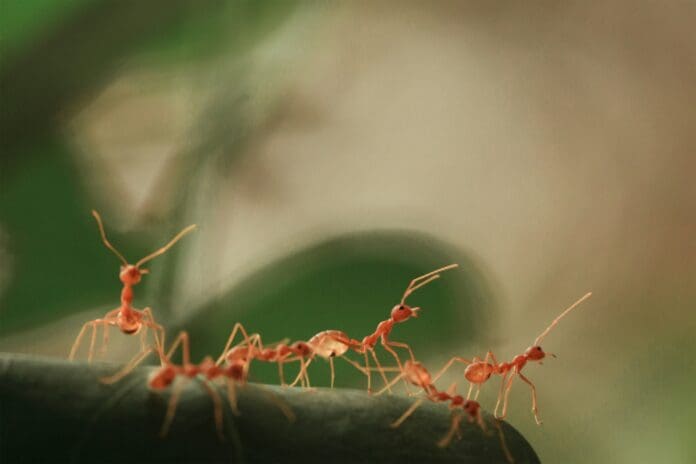This post is also available in:
 עברית (Hebrew)
עברית (Hebrew)
A research breakthrough from Seoul National University and Harvard University is pushing the boundaries of swarm robotics, introducing a new system that achieves complex, coordinated behavior without relying on sensors, wireless communication, or central control mechanisms.
Dubbed “link-bots,” the system is built on a simple idea: link together self-propelling particles using passive mechanical joints, forming chain-like structures that mimic behavior observed in nature. Drawing inspiration from biological systems—like ants or cellular collectives—the researchers demonstrated that even basic components, when properly configured, can produce sophisticated group dynamics, according to TechXplore.
Unlike traditional robotic swarms, which depend on precise electronics, artificial intelligence, and pre-programmed coordination, link-bots rely entirely on their physical design. By modifying the angle and arrangement of the connecting joints, researchers can dictate how the entire chain moves—whether it crawls, turns, stops, or adapts to its environment.
This shift from software to structure unlocks several advantages. Without the need for costly sensors or central processing, link-bots are smaller, cheaper, and more versatile. Their passive mechanical constraints inherently guide their motion, making them resilient in harsh or unpredictable settings where conventional robots might fail.
In tests, the chain formations were able to squeeze through narrow passages, block openings, transport objects, and collaborate in groups to complete tasks that would overwhelm a single unit. The system also showed the potential for self-reconfiguration, allowing for adaptation in real time without any external input.
To explore the full range of possibilities, the team developed a detailed simulation model, enabling researchers to predict how different chain geometries and link numbers influence movement, according to TechXplore. This model paves the way for future customizations tailored to specific real-world scenarios.
This nature-inspired approach could revolutionize robotics applications in disaster zones, difficult terrain, and environmental exploration—situations where simplicity, durability, and adaptability are more valuable than complexity.
The findings were published in Science Advances.


























